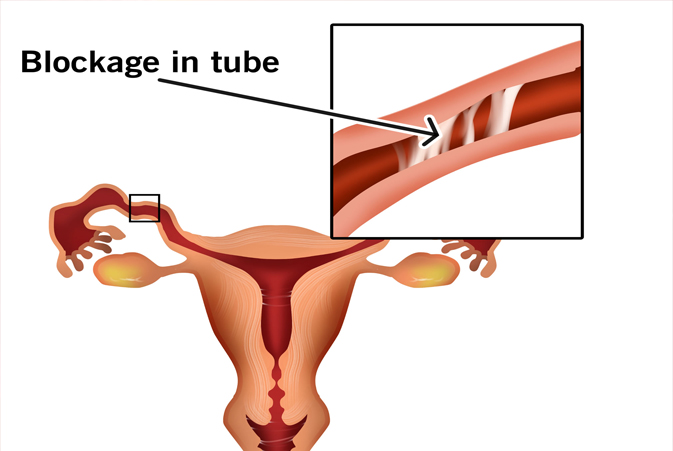
Blocked Fallopian tubes can cause fertility problems. Fallopian tubes are an important part of a pregnant woman's reproductive system. The role of the sperm in reaching the egg for the fertilization process is in the fallopian tubes, where the fertilized egg is placed in the uterus.
If a female's fallopian tubes are damaged, it might lead to blockage in fallopian tubes due to infection or they are might be malformed at birth, which can lead to Infertility.
Causes of blocked fallopian tubes
- Pelvic inflammatory disease. This disease can cause scarring or hydrosalpinx.
- Endometriosis. Endometrial tissue can build up in the fallopian tubes and cause a blockage.
- Certain sexually transmitted infections (STIs). Chlamydia and gonorrhea can cause scarring and lead to pelvic inflammatory disease.
- Past ectopic pregnancy. This can scar the fallopian tubes.
- Fibroids. These growths can block the fallopian tube, particularly where they attach to the uterus.
- Past abdominal surgery. Past surgery, especially on the fallopian tubes themselves, can lead to pelvic adhesions that block the tubes.
Types of blockage
- Distal tubal occlusion - the fallopian tube is blocked at the end closest to the ovary. This condition is commonly known as hydrosalpinx, usually caused by STIs.
- Midsegment blockage - the middle segment of fallopian tube is blocked. It is a common target of sterilisation interventions.
- Proximal tubal occlusion - the end of fallopian tube ( near uterus ) is blocked. This may be caused by infection due to abortion, miscarriages, cesarean section, or pelvic inflammatory disease.
Treatment
There are several options for treating blocked Fallopian tubes. Our Louisiana fertility surgeons support women in selecting the treatment option that is aligned with their unique needs, and gives them the best chance of developing a healthy pregnancy.
- In vitro fertilization (IVF) to bypass the Fallopian tubes. In some cases, the best treatment for blocked Fallopian tubes involves bypassing the Fallopian tubes and moving straight to IVF. This procedure involves ovulation induction, egg retrieval, fertilization, embryo transfer and the use of progesterone for the two weeks following the transfer.
- Laparoscopic or hysteroscopic surgery to repair the Fallopian tubes. These minimally invasive procedures can repair blocked Fallopian tubes. A laparoscopy involves a small telescope being inserted through a small incision in the patient’s belly button. The recovery time for this treatment is usually two to three days. A hysteroscopic surgery consists of the telescope being inserted through the cervix, so it does not require an incision. The recovery time for this treatment is usually 24 hours.
- Laparoscopic surgery to remove the Fallopian tubes. When the Fallopian tubes are significantly damaged, the best option may be to remove them because they could decrease a woman’s likelihood of conceiving. She would then need to utilize IVF to conceive.

